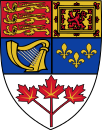 CANADA
Proudly we call our country a nation of laws. But a timeline published the Montreal Gazette of July 11, 2015 ought to give us pause. It appears in a section of the paper mostly devoted to a 25-year commemoration of the Oka Crisis, a standoff between the Quebec and Federal Governments' side and the Mohawks living in Kanesatake, near Montreal. 3 The Kanesatake land claim has been described as “perhaps the most difficult” of any dating from before Confederation. Kanesataki is not an official reserve but a checkerboard of Crown lands, totalling 828 hectares in 1990. Here are some milestones in Kanesatake's long struggle for land rights. 4 1676. Sulpician priests establish an aboriginal mission near present-day Sherbrooke St. W. and Atwater Ave [in Montreal]. 5 1683. More than 200 indigenous people, including Mohawks, Algonquins and Hurons, live outside the mission walls. 5A 1696. The mission moves to Sault-au-Récollet (present-day Ahuntsic), purportedly to remove the natives from the temptations of liquor. 5B 1716. The priests propose another move, promising that this time the aboriginals would have a large tract of land where they would never be disturbed again. King Louis XV of France grants three square leagues (52.41 square kilometres) on Lac-des-Deux-Montagnes “on condition that as soon as the Indians leave it will revert to the king.” The priests receive a smaller tract. 5C 1717. The Sulpicians complain to the king that the costs of building a stone fort were so high, they should be granted perpetual ownership of both tracts. The king agrees, but the aboriginals are not told the terms have changed. 5D 1721. The mission moves to present-day Oka. 5E 1733 and 1735. The king grants additional land to the Sulpicians, increasing the Seigneurie du lac des Deux-Montagnes to 673 square kilometres. 5F 1763. Under the Treaty of Paris, France cedes Canada, a colony of 60,000 along the St-Lawrence River, along with vast fur-trading territories stretching to the Gulf of Mexico, to Britain. King George III issues a Royal Proclamation decreeing that aboriginal peoples in unsettled territories to the west of the Thirteen Colonies and Quebec “should not be molested or disturbed” in their hunting grounds. 5G 1780. The Sulpicians start granting land in the seigneurie to white colonists. 5H 1787. Mohawk Chief Agneetha presses his people’s claim to the land, which the Mohawks call Kanesatake, meaning “on the hillside,” with Sir John Johnson, superintendent-general of Indian Affairs. 5I 1840. The colonial government confirms the Sulpicians’ title. 5J 1840s–70s. Aboriginals’ living conditions deteriorate as the priests restrict their right to cut wood, fine a Mohawk widow for renting out part of her farmland and confiscate a canoe built by a Mohawk for using their wood. 5K 1854. Algonquins from Oka move to a newly created reserve in Maniwaki, 310 kilometres northwest of Montreal. 5L 1867. The village is renamed Oka, supposedly after an Algonquin chief. 5M 1868. A majority of the Mohawks in Kanesatake, led by Chief Joseph Onasakenrat, convert to Methodism. 5N 1875. The Sulpicians demolish a Methodist Church built by the Mohawks. 5O 1877. The Catholic Church in Oka burns down. Onasakenrat and a dozen others are arrested but finally released in 1881. 5P 1882. The federal government creates a new reserve in Gibson, Ont., for the Kanesatake Mohawks, but two-thirds of the community members refuse to leave. 5Q 1912. The British Privy Council confirms the Sulpicians’ title. 5R 1945. The federal government buys land in Kanesatake from the Sulpicians, but not the Commons (the Pines) because it is uninhabited. 5S 1959. Quebec Premier Paul Sauvé passes a private member’s bill to create a nine-hole golf course on the Commons. 5T 1975. A comprehensive land claim by Kanesatake, Kahnawake and Akwesasne to a vast swath of southern Quebec, including Oka, is rejected because the Mohawks had not occupied the land continuously since time immemorial. 5U 1986. A specific land claim by Kanesatake to the former Seigneurie du lac des Deux-Montagnes is rejected because the Mohawks were judged never to have held title to it, 5V 1989. Oka announces plan to expand the golf course and build condos. 5W March 1, 1990. Mohawk protesters occupy the Pines. 5X June 30, 1990. Oka obtains an injunction ordering the barricade removed. 5Y July 11, 1990. The Sûreté du Québec raids the Pines. 5Z September 26, 1990. The Oka Crisis ends. Mohawk protesters leave a drug-treatment centre where they had been holed up. 5AA 1990 to 2007. The federal government buys 179 properties to enlarge Kanesatake’s land base. 5AB 2010–2015. Negotiations resume on Kanesatake’s land claim to the former Deux-Montagnes seigneurie. 5AC A history of the Sulpicians in The Quebec History Encyclopediawritten by Olivier Maurault in 1948 also mentions a number of the facts given above while leaving out others. And thus we have different flavors of roughly the same history. Elsewhere in the encyclopedia we learn about Chief Joseph Oriasakenrat: "Onasakenrat ('White Feather') Joseph. A Mohawk chief, noted for his translations of religious works into his native language. He was born on his father's farm, near Oka, Quebec, Sept. 4, 1845; at 14 years of age he was sent to Montreal College to be educated for the priesthood, remaining there about 4 years. He was afterward converted to Protestantism and became an evangelical preacher. On June 15, 1877, the Catholic church of Oka was burned, and Chief Joseph was tried for the offence, but was not convicted. 6 An article about aboriginal land claims is found in the Canadian Encyclopedia. 7
|
--
| top of page |
|